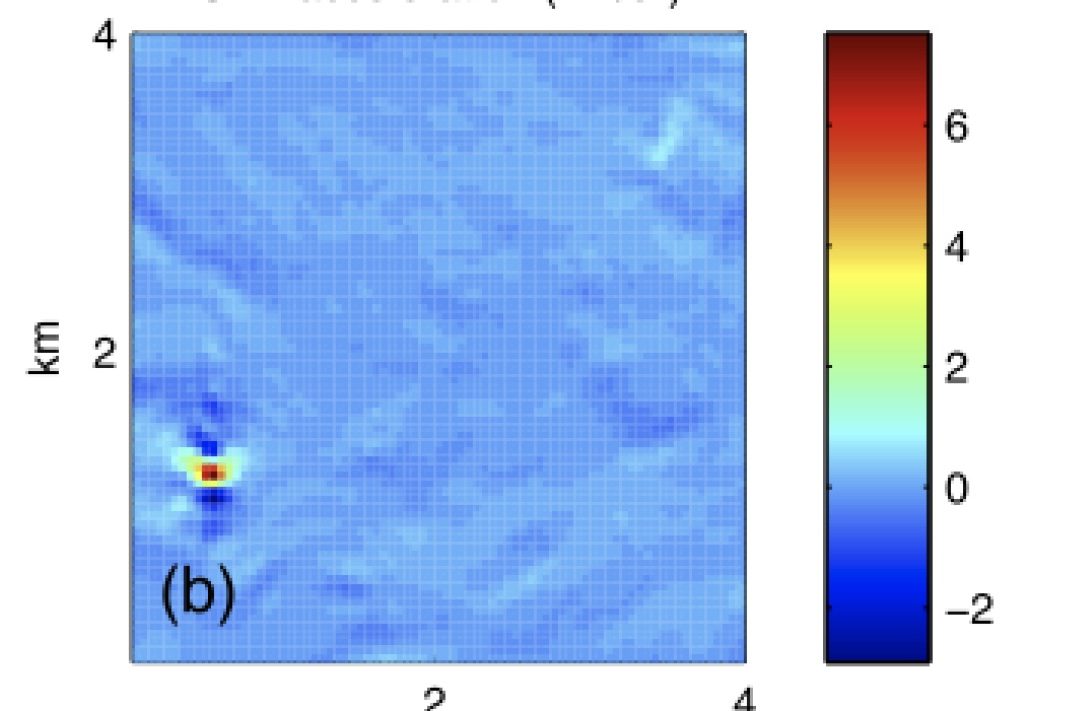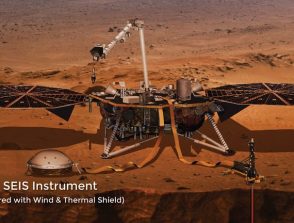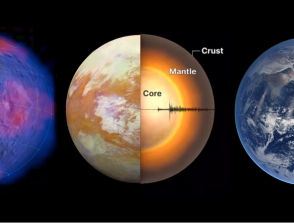Planetary applications of atmospheric seismology: Signals from the Martian turbulent atmosphere and observation perspectives in Venus’ ionosphere

Start: 01 October 2015
End: 12 November 2018
Supervisors :
Philippe Lognonné, William Bruce Banerdt
Related observatories :
InSight Observatory
Related teams :
Planetology and Space Sciences
Status: Defended
Space missions to other planets of our solar system greatly improved our understanding of their geology, atmospheres and magnetic and gravity fields. However, knowledge of the interior structure and dynamics of these bodies still su↵ers from the lack of in situ geophysical data. Indeed, geophysical methods – and in particular seismology, which is nowadays the most powerful technique to explore below the surface – have not been successfully applied to other planetary bodies, with the exception of the Moon. The InSight mission to Mars, scheduled for a landing on November 26, 2018, will be the first geophysical observatory devoted to the exploration of another planet. The payload includes the seismic experiment SEIS, which will be deployed at the surface of Mars: thus, it will be exposed to large temperature variations as well as to transient fluctuations of wind and pressure caused by atmospheric turbulence. In view of the InSight data return, we modeled some seismic e↵ects induced by the Martian atmosphere, in particular the quasi-static deforma-tion of the surface triggered by propagating pressure disturbances. This was done by coupling high-resolution numerical simulations of atmospheric con-vective and turbulent features with the ground response of various realistic subsurface models. This pressure loading turns out to be the largest con-tributor to environmental noise in the 10-100 s band. However, the induced seismic signals are coherent with the barometric pressure fluctuations: thus, a pressure decorrelation method was developed and is expected to increase the signal-to-noise ratio of seismic records by a factor of about 5-10. We also investigated the seismic e↵ects of dust devils, convective vortices occur-ring frequently on Mars, which have a characteristic signature and should be detected by SEIS on a regular (daily/weekly) basis. Meteorological and seismic records can also be used to determine some properties of the near surface down to a depth of several tens of meter, mainly its compliance -the way the ground reacts to pressure forcing – and the S-wave velocity from high-frequency (f>1 Hz) resonances. As known from ionospheric sounding in the case of the Earth, the atmo-sphere is not only a source of seismic signals, but acoustic-gravity waves coupled to seismic waves can propagate to high altitude and be observed with various techniques. Remote-sensing seismology may prove very power-ful in extraterrestrial seismology, especially for Venus, where the surface conditions are harsh for classical seismology, and the dense atmosphere guarantees a strong coupling with seismic waves. With this perspective in mind, we modeled the propagation of seismic waves in the high-atmosphere of Venus at 90-150 km, where airglow emissions are sensitive to traveling acoustic waves in the seismic band. Accounting for the coupling with the excited chemical species, we derived the corresponding signals in terms of airglow fluctuations. A preliminary noise analysis for a realistic observation strategy shows that quakes with magnitude larger than 5-6 (depending on the observed wavelength) could be detected by an orbiting airglow camera. Moreover, these observation would be rich of information about the crustal and lithospheric structure of Venus, thanks to the analysis of Rayleigh-wave dispersion.






